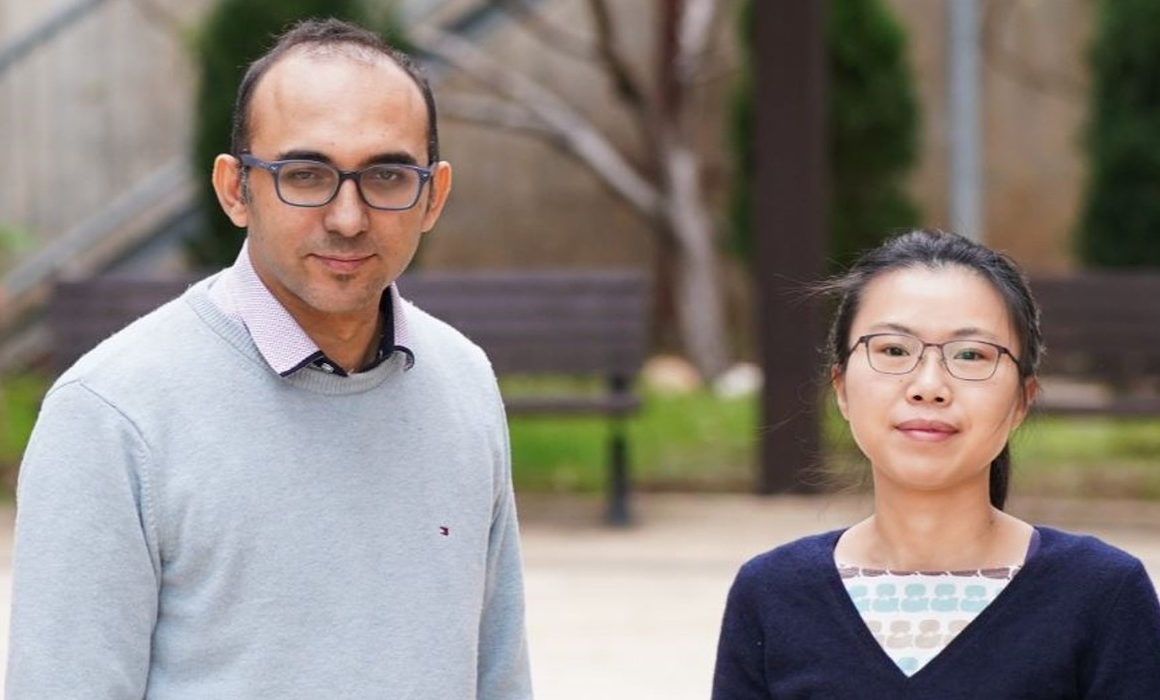Pictured above: Assistant Professor Ramez Daniel and Dr. Ximing Li
When you get an infection, your immune system mobilizes by sharing information about the pathogen and how much of a response is required. Microbial colonies, like the ones that make up your immune system, are stronger and smarter when they act collectively against threats like infection. To do that, they communicate among themselves through a phenomenon called “quorum sensing.”
In a recent breakthrough, Dr. Ximing Li and Assistant Professor Ramez Daniel from the Technion Faculty of Biomedical Engineering were able to engineer microbe colonies to recognize specific geometric patterns, such as letters, by modifying how microbe colonies communicate. Their findings were published in Nature Communications.
Prof. Daniel’s lab studies synthetic biology, specifically biological circuits. Like electronic switches that can be turned on and off, they engineered cells to “turn on” and perform a function, for example fluorescence, in response to a particular stimulus. Using this technique, the group has already engineered biological sensors that recognise the presence of arsenic and other poisons in water, or the presence of blood in urine.
For this study, Prof. Daniel’s group leveraged the quorum sensing phenomenon to increase the algorithmic complexity of the task it gave a colony, generating a biological circuit that acted as an artificial neural network that could perform the complex task of pattern recognition.
Geometric patterns are a proof of concept of what biological circuits acting as an artificial neural network can do. In the future, we might see bioengineered systems monitoring toxins, diagnosing cancer, and being used in tissue regeneration. We may one day even see biological computers that use biologically derived molecules to conduct computational analysis.


